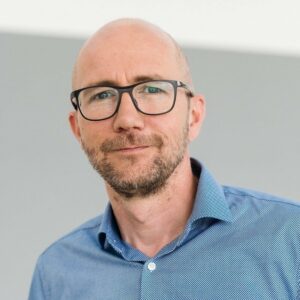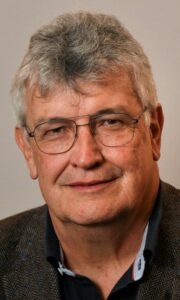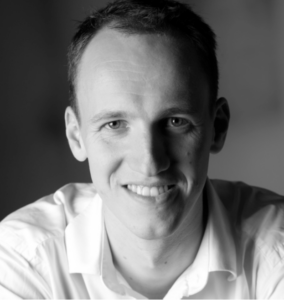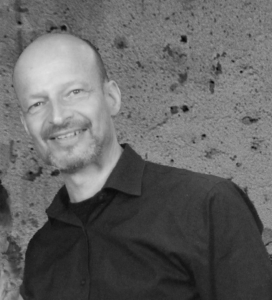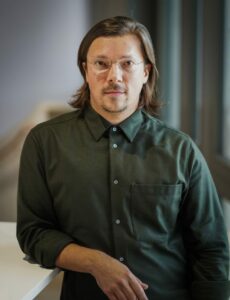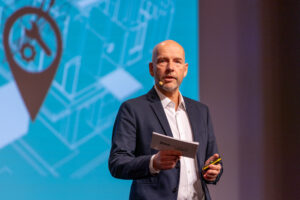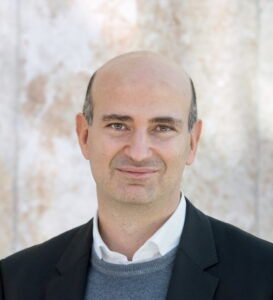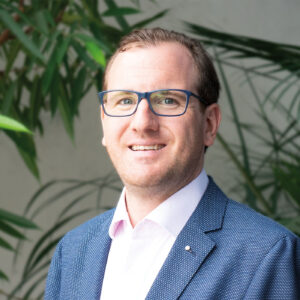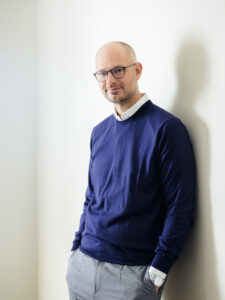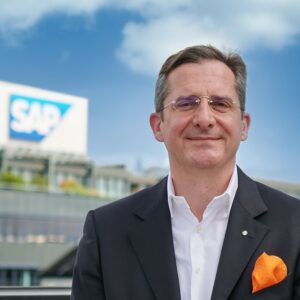Nachhaltigkeit in der BIM-Planung: Lebenszyklusanalyse mit Archicad
Description
Conserving resources and saving CO2 are the order of the day. We show you how you can identify the CO2 resources of the planned building at an early stage. This allows you to intervene in the planning process right from the design stage and optimize it accordingly.
Presenters
Kreislaufwirtschaft durch BIM
Description
Der Vortrag beleuchtet die Möglichkeiten der Förderung einer nachhaltigen Kreislaufwirtschaft im Baubereich über eine Schnittstelle zwischen der Architektur-Planungssoftware Vectorworks und der Online-Plattform Madaster. Sie erfahren, wie Bauteile mit den erforderlichen Klassifikationen und Materialien versehen werden, um einen Gebäuderessourcenpass auf der Grundlage eines BIM-Modells zu erstellen.
The presentation shows the possibilities of promoting a sustainable circular economy in the AEC industry through an interface between the architecture BIM software Vectorworks and the online platform Madaster. You will learn how building components are specified with the necessary classifications and materials in order to create a building resource passport based on a BIM model.
Presenters
Erfahrungen in einem BIM Pilotprojekt der Stadt Stuttgart
Description
Erfahrungen mit BIM in den frühen Leistungsphasen bis zur Leistungsphase 5 (aktueller Stand) mit Weitblick auf ein Erreichen eines “As built” Modells für den späteren Betrieb.
Kritische Fragen für den BIM “Workflow” in der Konzeptfindungsphase bis inkl. Leistungsphase 2.
Vergleich zur konventionellen Methode und der Frage nach Stift&Papier für das Büro “Behnisch Architekten”.
Kommunikation mit der Bauherrschaft hinsichtlich einer transparenteren Planung.
Presenters
On the Road towards a Sustainable Building Sector: The Importance of Digital Tools and Methods
Description
Lucio Blandini’s lecture emphasises the importance of end-to-end digitalisation of the entire value chain in the building industry. The latter is one of the main drivers of climate change and resource depletion. Its productivity and quality control lag significantly behind other industry sectors. If building is to become more sustainable from an ecological, economic and functional perspective, the entire value chain must be digitalized. Only thus can we ensure that the information required for a targeted building operations, conversions and demolitions will be available in the future.
Click “Unblock content” to watch the video
You are currently viewing a placeholder content from Default. To access the actual content, click the button below. Please note that doing so will share data with third-party providers.
Presenters
GIS, BIM und CAFM – wie die Welten zusammenwachsen
Description
Die Integration und Visualisierung unterschiedlicher Datentypen ist eine der wesentlichen Herausforderungen in der modernen Gebäudeverwaltung. Wie können 3D-Modelle, 2D-Grundrisse, Punktwolken und Bildmodelle nahtlos mit GIS-Informationen, Belegungsplänen und anderen Prozessdaten verknüpft werden, um eine fundierte Entscheidungsgrundlage zu schaffen? Ein Ansatz hierfür führt sowohl geometrische als auch Prozessdaten zusammen und eröffnet neue Wege zur effizienten Verwaltung von Gebäuden.
Click “Unblock content” to watch the video
You are currently viewing a placeholder content from Default. To access the actual content, click the button below. Please note that doing so will share data with third-party providers.
Presenters
Mit Digitalen Zwillingen zu mehr Effizienz und Nachhaltigkeit bei Bestandsgebäuden
Description
Digitale Zwillinge versprechen große Vorteile beim integrierten Assetmanagement und Gebäudebetrieb: z.B. skalierbares und effizienteres Management, vorausschauende Wartung, Energieeinsparungen. Aber trifft das nur auf Neubauten zu oder auch auf Bestandsgebäude? Und wie erstellt man Digitale Zwillinge von Gebäuden, die schon mehrere Jahrzehnte alt sind und von denen es nur eine weitgehend analoge und oftmals rudimentäre Datengrundlage gibt? Die Münchner BENO Holding AG, ein Immobilienbestandshalter mit Fokus auf betriebsnotwendige Immobilien, hat sich genau diese Fragen gestellt. CEO Michael Bussmann nennt die Antworten und berichtet, warum BENO auf Digitale Zwillinge im Asset- und Gebäudemanagement setzt.
Click “Unblock content” to watch the video
You are currently viewing a placeholder content from Default. To access the actual content, click the button below. Please note that doing so will share data with third-party providers.
Presenters
Major Release 2024 – Der Leitfaden Geodäsie und BIM V4.0
Description
BIM4SmartRegions – Digital Twins for Buildings and Cities presented by LOC and Runder Tisch GIS e.V.
Der große und ungebremste Erfolg des Leitfadens „Geodäsie und BIM“ basiert wesentlich auf den Beiträgen der Berufskolleginnen und -kollegen in der Praxis. Mit Downloadzahlen im fünfstelligen Bereich sowie weit über 1000 Google-Treffern besitzt er heute eine beachtliche Reichweite und ist als Nachschlagewerk für Fachleute im deutschsprachigen Raum etabliert. In diesem Jahr erhielt der gemeinsam von DVW und RTG publizierte Leitfaden eine umfangreiche Auffrischung mit neuen spannenden Beiträgen und interaktiven Inhalten rund um das Thema Geodäsie und BIM.
Presenters
Herausforderungen und Lösungswege einer nachhaltigen Transformation von Bestandsimmobilien
Description
Bei dem Projekt Midstad Frankfurt, wird eine monofunktionale Bestandsimmobilie in ein nachhaltiges, multifunktionales Gebäude transformiert. Das bisher als reine Einzelhandelsimmobilie genutzte Haus von 1988 wird in eine Multi-Use-Immobilie, die Einkaufen, Freizeit, Arbeit, Kultur, Sport und Bildung vereint, transformiert. Nachhaltigkeit, Flexibilität und eine umweltfreundliche Bauweise in Form einer Holzhybridkonstruktion, stehen im Vordergrund.
Eine besondere Herausforderung ist der Umbau im laufenden Betrieb sowie die Einhaltung hoher Nachhaltigkeitsstandards (angestrebt: DGNB Platin). Zudem spielt die Digitalisierung eine zentrale Rolle, um den späteren Betrieb effizient zu gestalten.
Click “Unblock content” to watch the video
You are currently viewing a placeholder content from Default. To access the actual content, click the button below. Please note that doing so will share data with third-party providers.
Presenters
Digital twins, networks and business platforms: how software-based innovations are changing our world
Description
We all know very well that BIM World is all about digitalization of the construction, real estate, and facility management industries. – And, of course, digitalization is not something that is unique to our very industries but is an essential part of all industries, thanks to advances in information technology, let alone AI.
To embrace digitalization to the fullest, not only data is needed but coherent information from many different sources and aspects; this helps software to thrive, build digital twins and exchange valuable data with others to optimize value creation and offer new and unique solutions.
Michael Byczkowski is working on such aspects in healthcare and life sciences, and the similarities are striking: he will show us, how software-based innovations are changing industries and the world.
Click “Unblock content” to watch the video
You are currently viewing a placeholder content from Default. To access the actual content, click the button below. Please note that doing so will share data with third-party providers.

